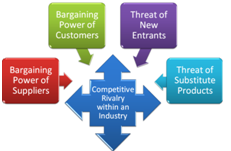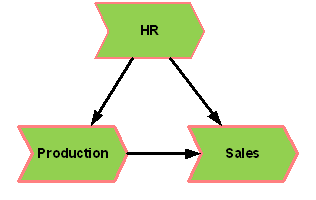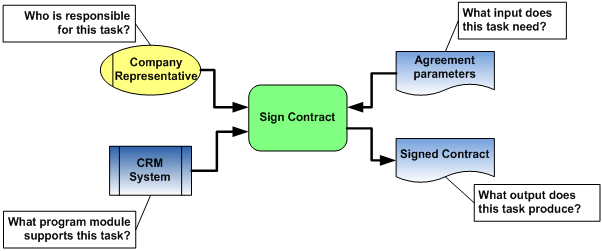Why tasks are important
A few years ago the International Institute of Business Analysis created a book called the Business Analysis Body of Knowledge, changing the profession forever. It did so without introducing something revolutionary new – most of us already knew the tasks defined there. But the BABOK changed the context. It moved the debate from “How we do the profession” to the question “What needs to be done”. Instead of discussing design issues (methodologies, standard techniques) we’re now discussing requirements issues (tasks, technique usage)
This paradigm shift is long due in Enterprise Architecture initiatives. The design debate trying to find the ultimate methodology has been in deadlock for years. And as with any project in such situation we should look to the requirements – and try to define and understand them better.
An enterprise exists for a purpose, stated in its high-level goals and business model. It also has everyday operations which may or may not serve this purpose. We need a link between the two and this is what Enterprise Architecture is about – the establishment of a link between an organization’s ultimate goals and its day-to-day operations.
Yet it serves no purpose to just say this. We need to know what it means – know what we do to establish this link. There are five levels on which this link is established:
-
Understanding the Customer – Organizations ultimately exist to serve people. So any organization needs to identify the stakeholders who justify its existence
-
Defining Business Model – Reaching a high-level understanding of what the organization actually does and how it is of value to the customer
-
Aligning Processes - Reaching understanding of how major processes within the organization align with the business model and serve the overall purpose of the organization
-
Designing Processes – Looking at how processes are executed in detail and trying to improve efficiency
-
Specifying Process Requirements – Looking at what a process needs to function as designed – people, resources, IT systems, etc
It can be argued that the first step is in fact marketing and the fourth and fifth are actually traditional Business Analysis. While this might be the case, these five steps together are not separable. All of this needs to be done as a coordinated effort to ensure quality result end to end.
Understanding the Customer
Understanding the customer is both similar and different to stakeholder analysis. The similarity comes in the necessity to identify the main customers for whom the enterprise exists and other important stakeholders . But this is analysis of both enterprises and people. Therefore stakeholder relationships are much more complex than in your average BA project and poor analysis is even more damaging to later efforts.
Market segmentation helps classify current and potential customers. It groups people and companies in segments with similar needs and preferences. These groups are potential markets and a business model can be put together to serve their common needs. But to prepare such we need to understand the customers in the segment very well and be aware of the overall market situation around them.
Porter's five forces analysis assumes we have indefinite number of potential customers and need to make a choice – who is "our" customer, the one this particular enterprise is going to serve. Porter's model defines five forces working within a market environment that make a customer more or less desirable.

Three of the five forces define ways in which a customer need is met:
-
by existing companies offering the exact product a customer needs
-
by existing companies offering similar product to what a customer needs.
-
by new companies offering similar products
If a customer needs are already met by another company then our enterprise becomes less necessary. And if other companies can easily start to do the same thing we’re doing then why does it have to be us? Later in the business model this questions will all help us make a better description of how we create and deliver value.
The other two forces deal with how much profit we can expect from this customer :
-
the bargaining power of the potential customers themselves – will they allow us to make profit meeting their needs?
-
The bargaining power of the potential suppliers for resources we need to meet the need – is there danger that a supplier will take most of the profits this customer generates?
These two questions determine how hard it is to make a business model for this customer that captures value.
Defining Business Model
The business model is about what the company is trying to achieve. It is the rationale for how the company is going to help the customer and be compensated for this. The company’s mission is usually part of the business model but rarely detailed enough to contain it completely. A complete business model needs to answer these questions:
-
Creating value - What do we create that has value to the customer ?
-
Delivering value - How do we get that product/service to them?
-
Capturing value - How do we receive compensation for the product/service?
All three questions need to be answered to a sufficient level of detail for an outside person to see what the enterprise is doing and have immediate answer to questions like this:
-
Is the company introducing a new unique product or improvement on an existing one? Why should the customer care?
-
Is the company using established distributors or building their own distribution network?
-
Is the company selling its product (e.g. selling software licenses) , renting it (e.g. online services), or receiving income in another way? (e.g. providing service for free but charging advertisers)
If we can answer these questions and similar ones we have a finished business model. But it does not mean we have a functional company. To have one we need to identify what processes the company needs to do and why. The business model for example should not be concerned with how a company hires people – but this is still crucial for its operations.
Aligning Processes
Process alignment is the task of planning high-level processes in a way that serves the business model. Doing this helps the company become efficient on the strategic level.
The core processes are activities that result directly in value creation, delivery or capture in the context defined by the business model. They are focused on the customer. Production, sales, logistics, revenue assurance are all examples of core processes.
The supporting processes are activities that bring value by making core processes possible or increasing their efficiency. Examples are HR processes, accounting, IT.
For example a good HR process ensures you have the best personnel working on each task. This improves the execution of core processes which in turn creates value. Because the link is indirect it is always much harder to evaluate the alignment of a supporting process. There are some techniques aimed at helping with this task.

Value Chain Analysis focuses on identifying the major processes and explaining how each of them contributes to the overall business result. These value-adding relationships are represented in diagrams as arrows between major processes in the company . An arrow indicates that a process contributes value that is added to the results of another process.
The Balanced Scorecard uses a slightly different approach to this task. Processes are assigned objectives – an objective describe the value contributed by this process. For example for a process like “Managing human resources” we’ll have an objective “Having qualified and motivated employees”. Value-adding links are then sought between objectives.
For example let’s say our business model includes maintaining long-term relationships with customers. In that case “Ensure customer retention” can be linked directly to the business model. The customer support process has an objective “Provide customers with quality support 24/7”. We need to analyze whether quality support improves customer retention. If that is the case then we have understood why the customer support process is important.
Now let’s consider – can we provide quality support 24/7 without competent and motivated people? If not, then we have linked “Having qualified and motivated employees” to the business model as well. Can we have quality support without working IT infrastructure? Without office maintenance? Maybe we can maybe we can’t – deciding that is what aligning the processes is all about.
Once our processes are aligned with the business model we know why they are executed. But we still don’t know how they are executed – what activities they contain. To know why we’re doing sales is not the same as to know how we’re doing sales. So the next question is how- and it’s the subject of process design.
Designing Processes
Process design is aimed at creating a process that achieves its assigned objective in the most efficient way possible. To do this Business Analysts gather information from subject matter experts and express it in a coherent set of diagrams and documentation. This is done for a number of reasons:
-
Education - People involved in the process need to know what they have to do
-
Motivation - People also work better if they know how their work relates to the “bigger picture”
-
Improvement – Having well-documented design is a prerequisite to analyze process improvement opportunities
-
Control – Documented processes help managers keep track of whether process execution follows the created design and explore where and why the actual process deviates from the blueprint
There are numerous techniques for designing processes – flowcharts, activity diagrams, EPC diagrams, BPMN. Their main elements are usually similar and include:

-
Start and end - In what situation does the process start? What is the end result of the process?
-
Steps - What activities does the process include? In what order are they executed?
-
Participants - What are the people responsible for each step?
-
Decisions - What alternative paths does the process take and who decides the right path
There is often temptation to equate business processes to system processes. While they use similar techniques they have fundamental differences. This is best highlighted in expressing decisions.
In an IT process it’s important to know the rule for taking alternative paths. The system will have to execute the rule exactly as written so it needs to be specified in much detail. In a business processes the decision is made by a person. You can provide that person with guidelines but in the end it’s up to him/her to decide what to do. Consequently in process design the focus is first on the person and after that on defining the guidelines for that person.
Specifying Process Requirements
Ultimately we want a working business process – not just a design. A diagram by itself is not able to achieve that. Inside a business process there are numerous requirements. Usually these requirements are not explicitly stated but need to be brought into the open.

Process requirements vary in nature. Business Analysis ultimately serves to bring them out by working with stakeholders, examining documentation etc. Some common requirements are:
-
Human Resources – what skills and competencies are required for the people participating in the process? Do they need to be hired/undergo training?
-
Data – What information is required to perform each ask? What information needs to be stored after task execution?
-
Resources – what resources are needed to achieve this task? How are they delivered?
-
IT Functionality – What are the requirements for IT systems supporting each task
Who is responsible
A Business Analyst is any person who performs Business Analysis activities”
Business Analysis Body of Knowledge 2.0
The job of a Business Analyst is not dependent on his/hers job title. In the same way it does not matter whether Enterprise Analysis is part of Business Analysis or a separate profession.
The tasks need to be done and they need to be done in context. Too often entrepreneurs build business models without any consideration about the customer. Companies can continue useless activities for years driven by simple inertia and lack of understanding what purpose each process serves and how they are aligned with the company’s objectives. And last but not least, how often have you been in situations where as a Business Analyst you get so deeply flawed process design and process requirements that you need to correct them from scratch?
The Business Analyst profession is growing and becoming more integrated. We are already at the point where the line between process analysts and requirements analyst is almost gone. We may soon find that marketing and management analysis is really not that far away.
 Author: Peter Lefterov is a freelance Business Analysis consultant and trainer with experience in many different industries and Business Analysis roles. His experience includes process design initiatives with the ARIS framework, managing requirements for customer care and billing systems in Telecommunications, analysis of requirements for key systems in government and commercial institutions. He is founding VP of the Sofia chapter of the International Institute of Business Analysis and one of the first BAs in Europe to pursue and achieve the CBAP designation. For more information visit:
Author: Peter Lefterov is a freelance Business Analysis consultant and trainer with experience in many different industries and Business Analysis roles. His experience includes process design initiatives with the ARIS framework, managing requirements for customer care and billing systems in Telecommunications, analysis of requirements for key systems in government and commercial institutions. He is founding VP of the Sofia chapter of the International Institute of Business Analysis and one of the first BAs in Europe to pursue and achieve the CBAP designation. For more information visit:
http://www.linkedin.com/in/plefterov
http://www.baconsulting.eu/